 W
WThe Abbott's duiker, also known as minde in Swahili, is a large, forest-dwelling duiker found only in a few scattered enclaves in Tanzania. It may be a subspecies of the yellow-backed duiker. It is very rare, and the first photograph of an Abbott's duiker in the wild was taken as recently as 2003.
 W
WAllen's chipmunk is a species of chipmunk. It is also known as the shadow chipmunk. It is native to the western United States, where it occurs in California, Nevada, and Oregon. It is a common species of the Sierra Nevada.
 W
WThe antelope jackrabbit, found in Southern Arizona and Northwestern Mexico, is a species of North American hare. Within this range, it occupies dry desert areas. This species is placed in family Leporidae, which is within order Lagomorpha. Male and female antelope jackrabbits are identical in appearance. This species is large in size with long, pointed ears and a distinct coat coloration. The antelope jackrabbit has a white belly, light grey sides, a back peppered with black, and orange coloration on the neck and chest. It is similar to species like the black-tailed jackrabbit and white-sided jackrabbit. It is most active during twilight (crepuscular) and during the night (nocturnal), but can be active during the day when conditions are favorable. It feeds on cacti, mesquite leaves, and other vegetation.
 W
WThe Arizona cotton rat or Colorado River cotton rat is a species of rodent in the family Cricetidae. It is found in Mexico and the United States.
 W
WThe black crested mangabey is a species of primate in the family Cercopithecidae. It is found in Angola and Democratic Republic of the Congo. Its natural habitat is subtropical or tropical dry forests. It is threatened by habitat loss.
 W
WThe Bornean mountain ground squirrel is a species of rodent in the family Sciuridae. The scientific name commemorates British colonial administrator and zoological collector Alfred Hart Everett.
 W
WThe California chipmunk or chaparral chipmunk is a species of rodent in the squirrel family Sciuridae. It is found in Baja California, Mexico and in southern California in the United States.
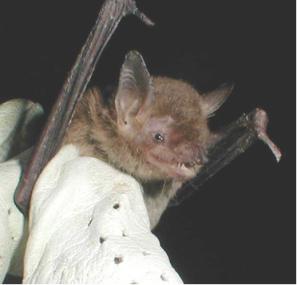 W
WThe cave myotis is a species of vesper bat (Vespertilionidae) in the genus Myotis.
 W
WThe chestnut short-tailed bat is a bat species from South and Central America. The species is often confused with the Benkeith's short-tailed bat. It is a mainly frugivorous species that has been known to consume insects. To determine which pipers to forage on, it focuses on oder and then after proceeds to echolocate to determine position. It hunts between nightfall and midnight. Habitats include hollow trees, caves, cracks, abandoned mines, sewers, and house roofs. It does not decrease activity during full moons, only instances of turbulent weather like heavy rain. In an agricultural setting it has a higher resistance to habitat fragmentation compared to similar bat species.
 W
WThe Chinese red pika is a species of mammal in the family Ochotonidae. Typical of a pika it has short limbs, a small tail and round ears. Specific to the Chinese red pika has distinctive red color in its pelt. The Chinese pika typically lives in rocky terrain at altitudes between 600–1200 meters. and is endemic to the East Qinghai, West Gansu and Northern Sichuan provinces of China and Eastern Tibet.
 W
WThe dark-nosed small-footed myotis is a species of mouse-eared bat in the family Vespertilionidae, described in 1890, and indigenous to Canada, Mexico, and the United States. While the International Union for Conservation of Nature suggests that M. melanorhinus is uncommon, the species nonetheless enjoys an extensive habitat, at least encompassing British Columbia, central Mexico, and Oklahoma.
 W
WThe dayak fruit bat or dyak fruit bat is a relatively rare frugivorous megabat species found only on the Sunda Shelf of southeast Asia, specifically the Malay Peninsula south of the Isthmus of Kra, and the islands of Borneo and Sumatra. There are three species in the genus Dyacopterus: D. spadiceus, D. brooksi and D. rickarti. All are found in the forests of Malaysia, Thailand, and the Philippines. Few specimens of any of the three species exist, due not only to their rarity, but also because they rarely enter the subcanopy of the forest where they can be caught in scientists' nets.
 W
WThe eastern cottontail is a New World cottontail rabbit, a member of the family Leporidae. It is the most common rabbit species in North America.
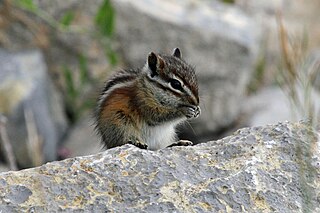 W
WThe gray-collared chipmunk is a species of rodent in the family Sciuridae. It is endemic to Arizona and New Mexico in the United States.
 W
WThe gray-headed lemur, or gray-headed brown lemur, is a medium-sized primate, a cathemeral species of lemur in the family Lemuridae. Until a taxonomic revision in 2008, it was known as the white-collared brown lemur or white-collared lemur. It lives in south-eastern Madagascar. In 2005, satellite imagery estimates showed approximately 700 km2 (270 sq mi) of total remaining habitat within its geographic range. It is highly threatened by hunting and habitat loss, and was considered to be among the 25 most endangered primates in 2006–2008. It is currently listed as Critically Endangered by the International Union for Conservation of Nature (IUCN) due to a highly restricted range, and has been named one of "The World's 25 Most Endangered Primates."
 W
WThe Hawaiian hoary bat, also known as ʻōpeʻapeʻa, is a species of bat endemic to the islands of Hawaiʻi. Whereas the mainland hoary bat is found throughout North and South America, the Hawaiian hoary bat is distributed only among the major volcanic islands of Hawaiʻi, making it the only extant and native terrestrial mammal in the state. The Hawaiian hoary bat was officially named the state land mammal of Hawaiʻi in 2015. It is a federally listed endangered taxon of the United States.
 W
WThe banner-tailed kangaroo rat is a species of rodent in the family Heteromyidae. It is found in arid environments in the southwestern United States and Mexico where it lives in a burrow by day and forages for seeds and plant matter by night.
 W
WThe Lodgepole chipmunk is a species of rodent in the family Sciuridae. It is found in the U.S. state of California at elevations from 1,500 to 3,000 metres. The Lodgepole chipmunk has a variety of common names including: Tahoe chipmunk, Sequoia chipmunk, Mt. Pinos chipmunk, and San Bernardino chipmunk.
 W
WThe long-clawed shrew is a species of shrew. An adult long-clawed shrew has a weight of less than 20 g and a body length of 54–97 mm, with a tail of 40–53 mm. It is distributed through the uplands of northeastern Asia, including northeastern North Korea.
 W
WThe Luzon shrew is a species of mammal in the family Soricidae. It is endemic to the Philippines. It is threatened by habitat loss.
 W
WMerriam's kangaroo rat is a species of rodent in the family Heteromyidae. The species name commemorates Clinton Hart Merriam.
 W
WMerriam's shrew is a species of mammal in the family Soricidae. It is endemic to the western United States and extreme southern British Columbia in Canada.
 W
WThe montane shrew is a species of mammal in the family Soricidae commonly known as the dusky shrew. Monticolus is derived from the Latin root word mons meaning mountain. It is found in Alaska, western Canada, the western United States in Washington, Idaho, Montana, Utah, Colorado, New Mexico, Arizona, Oregon, Nevada, and California, as well as in Mexico.
 W
WThe northern Luzon giant cloud rat or northern Luzon slender-tailed cloud rat, also known as bu-ot in Filipino, is a large species of rodent in the family Muridae. It is only found in Luzon, the Philippines.
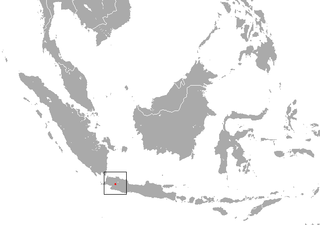 W
WThe Oriental shrew is a species of mammal in the family Soricidae. It is endemic to Indonesia. It is threatened by habitat loss.
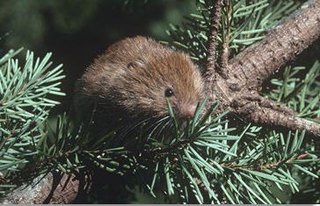 W
WThe red tree vole is a rodent of the Pacific Northwest, found in Oregon and California.
 W
WThe western spotted skunk is a spotted skunk of western North America.
 W
WThe Somali dwarf shrew is a species of mammal in the family Soricidae. It is found in Ethiopia and Somalia. Its natural habitat is subtropical or tropical dry lowland grassland.
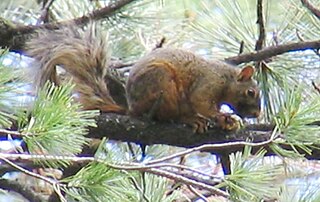 W
WThe Mexican fox squirrel (Sciurus nayaritensis) is a species of tree squirrel found throughout the Sierra Madre Occidental of Mexico as far south as Jalisco — and northward into the Chiricahua Mountains of southeastern Arizona, U.S.
 W
WThe Texas antelope squirrel is a species of rodent in the family Sciuridae. It is found in Mexico and in both Texas and New Mexico within the United States.
 W
WThe Uinta chipmunk or hidden forest chipmunk, is a species of chipmunk in the family Sciuridae. It is endemic to the United States. Formerly known as Tamias umbrinus, phylogenetic studies have shown it to be sufficiently distinct from the eastern chipmunk as to be placed in a separate genus, Neotamias. The same studies have also suggested that Palmer's chipmunk may actually be a subspecies of Uinta chipmunk, although the two are still generally regarded as separate species.
 W
WThe Ussuri white-toothed shrew is a species of musk shrew found on the mainland Northeast Asia. It is common and widespread, and is one of the largest shrews found in the region, with adult weight of 14-25 grams. It should not be confused with the related Ussuri shrew.
 W
WThe western red-backed vole is a species of vole in the family Cricetidae. It is found in California and Oregon in the United States and lives mainly in coniferous forest. The body color is chestnut brown, or brown mixed with a considerable quantity of black hair gradually lightening on the sides and grading into a buffy-gray belly, with an indistinct reddish stripe on the back and a bicolored tail about half as long as the head and body.
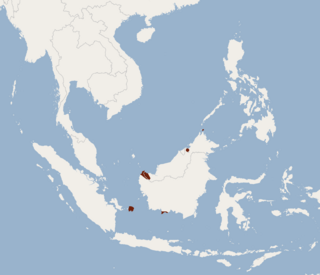 W
WThe Vordermann's pipistrelle is a species of vesper bat found in Brunei Darussalam, Indonesia, and Malaysia.
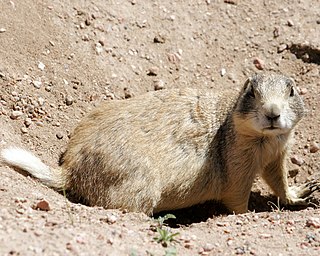 W
WThe white-tailed prairie dog is found in western Wyoming and western Colorado with small areas in eastern Utah and southern Montana. The largest populations are in Wyoming where they are known colloquially as "chiselers". This prairie dog species lives at an elevation between 5,000 and 10,000 feet, generally a higher elevation than other prairie dog species. Its predators include black-footed ferrets, badgers, and golden eagles.
 W
WThe yellow-pine chipmunk is a species of order Rodentia in the family Sciuridae. It is found in western North America: parts of Canada and the United States.